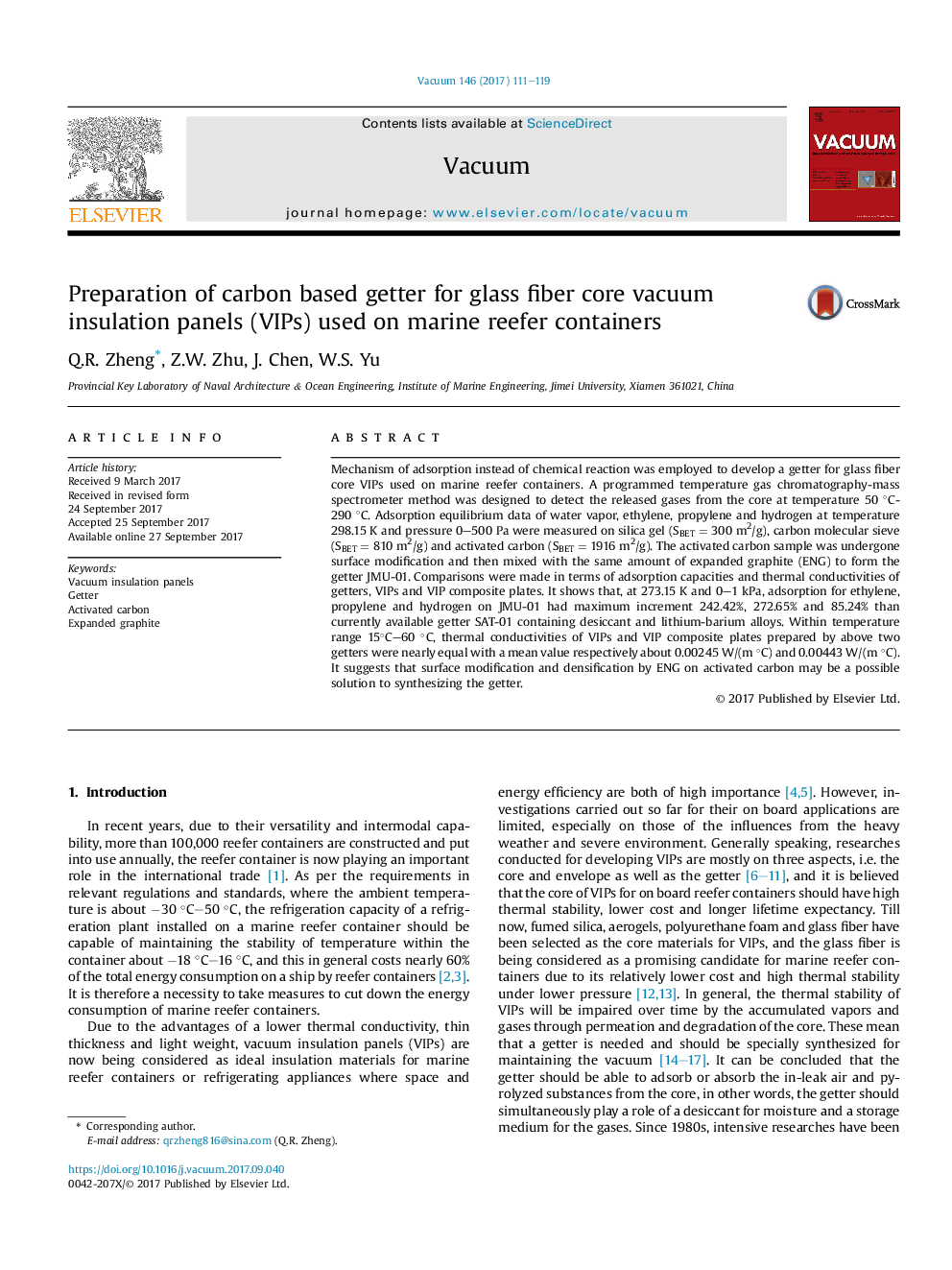| Article ID | Journal | Published Year | Pages | File Type |
|---|---|---|---|---|
| 5467975 | Vacuum | 2017 | 9 Pages |
Abstract
Mechanism of adsorption instead of chemical reaction was employed to develop a getter for glass fiber core VIPs used on marine reefer containers. A programmed temperature gas chromatography-mass spectrometer method was designed to detect the released gases from the core at temperature 50 °C-290 °C. Adsorption equilibrium data of water vapor, ethylene, propylene and hydrogen at temperature 298.15 K and pressure 0-500 Pa were measured on silica gel (SBET = 300 m2/g), carbon molecular sieve (SBET = 810 m2/g) and activated carbon (SBET = 1916 m2/g). The activated carbon sample was undergone surface modification and then mixed with the same amount of expanded graphite (ENG) to form the getter JMU-01. Comparisons were made in terms of adsorption capacities and thermal conductivities of getters, VIPs and VIP composite plates. It shows that, at 273.15 K and 0-1 kPa, adsorption for ethylene, propylene and hydrogen on JMU-01 had maximum increment 242.42%, 272.65% and 85.24% than currently available getter SAT-01 containing desiccant and lithium-barium alloys. Within temperature range 15°C-60 °C, thermal conductivities of VIPs and VIP composite plates prepared by above two getters were nearly equal with a mean value respectively about 0.00245 W/(m °C) and 0.00443 W/(m °C). It suggests that surface modification and densification by ENG on activated carbon may be a possible solution to synthesizing the getter.
Related Topics
Physical Sciences and Engineering
Materials Science
Surfaces, Coatings and Films
Authors
Q.R. Zheng, Z.W. Zhu, J. Chen, W.S. Yu,
